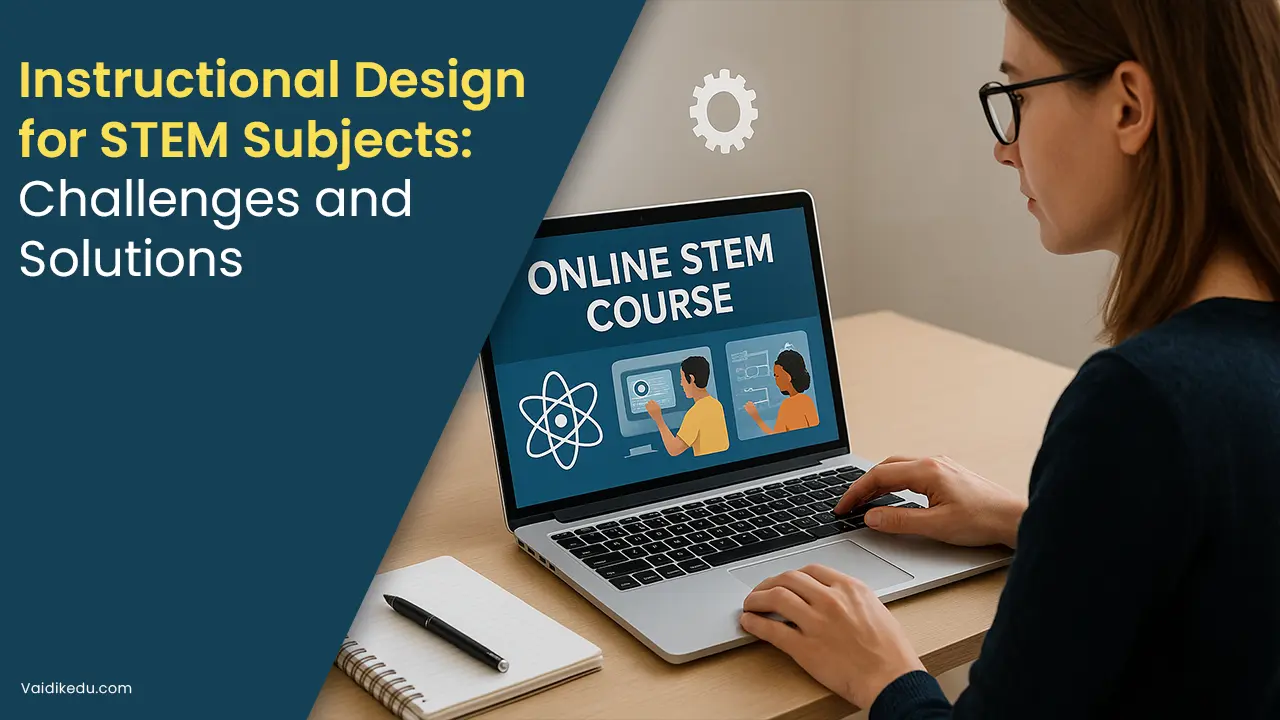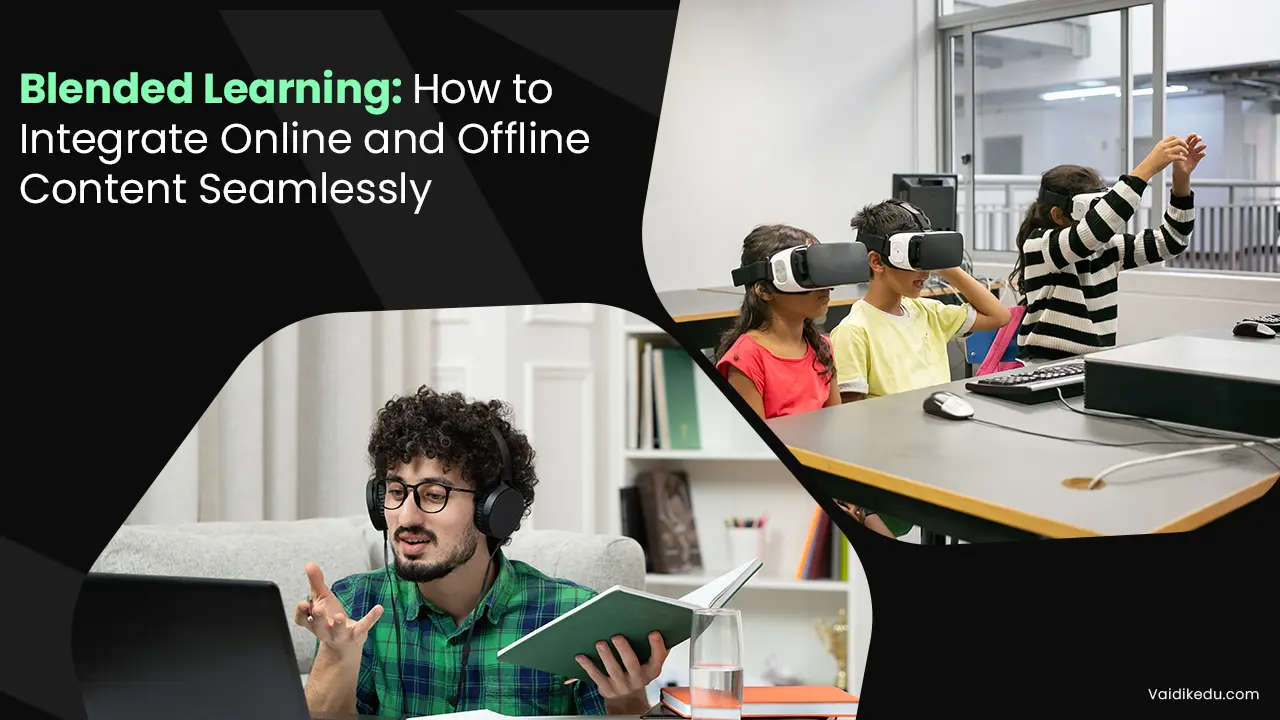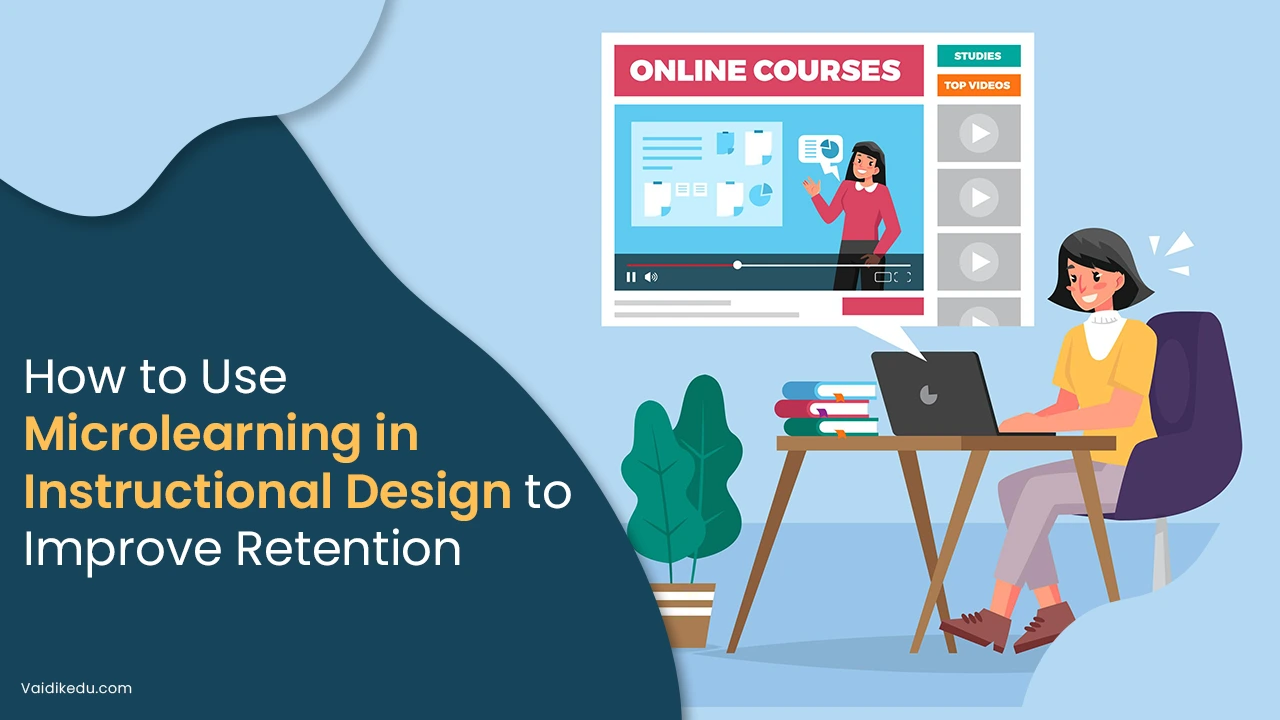Over time, STEM education which combines science, technology, engineering, and mathematics has grown in importance because it is essential to preparing children for the problems of the future.
The development of the analytical, creative, and problem-solving abilities required in today’s environment depends heavily on STEM fields. However, teaching these disciplines presents a unique set of challenges that necessitate thoughtful and strategic instructional design.
Teachers must think about how to modify their teaching methods to accommodate the various needs of their students while promoting greater comprehension and retention as they work to make STEM education more successful and entertaining.
Making sure the material is accurate, understandable, and interesting is one of the biggest problems in creating STEM courses. STEM courses can be esoteric and challenging for students, particularly in K–12 settings where they might struggle to understand complex concepts without the right teaching aids.
Additionally, because STEM is transdisciplinary, which frequently calls for immersive, inquiry-based learning opportunities, students must integrate information from several courses. Flexible and adaptable teaching strategies are necessary to meet the curriculum’s main goals while promoting creativity and innovation.
Coordinating teaching methods, content delivery, and assessments requires instructional design in order to promote active learning, curiosity, and real-world problem-solving.
Another significant barrier to STEM education is the dearth of qualified STEM educators who can instruct these challenging subjects in an engaging and effective manner. The inequality in STEM literacy, especially in certain regions or among disadvantaged populations, exacerbates the problem. In order for teachers to improve their teaching strategies, instructional designers must assist them by providing them with top-notch resources and chances for professional growth.
Although utilizing technology in the classroom has numerous advantages, there are also disadvantages, particularly when it comes to ensuring that digital tools and platforms are utilized to enhance learning outcomes rather than as a diversion.
In order to guarantee that STEM education is successful for both teachers and students, the second question is: How can instructional designers solve these issues?
Major Challenges in STEM Instructional Design
1. Conceptual Complexity
Deep comprehension of intricate and abstract ideas is necessary for STEM topics. Basic concepts, such intricate mathematical formulas or complex scientific theories, can be challenging for students to understand, especially if they are not familiar with the subject matter.
To get around this challenge, instructional design needs to simplify complex concepts into manageable chunks and give students interactive experiences, concise explanations, and visual aids that progressively aid in the development of fundamental knowledge.
This generally incorporates the use of inquiry-based learning, when students actively participate in experiments, projects, or problem-solving activities to apply their knowledge in real-world circumstances.
2. Involving A Diverse Student
Body Students in STEM classes come from a variety of backgrounds, have different learning styles, and have different interests. Making sure that the resources accommodate this variability while maintaining student interest is one of the major problems of instructional design in STEM.
Traditional, lecture-based training may not engage students who require more interactive, hands-on experiences to completely understand STEM subjects.
Instructional designers must employ a variety of teaching techniques, including project-based learning, flipped classrooms, and cooperative group work, to meet the needs of students with different learning styles.To satisfy the needs of students with diverse levels of STEM ability, differentiation tactics are also crucial.
3. Including Multidisciplinary Education
Because STEM topics are by their very nature interdisciplinary, knowledge and abilities from one field like technology can frequently be immediately transferred to another, like engineering. It is not simple to develop a curriculum that effectively combines knowledge from many fields.
In order to help students recognize the connections between disciplines like biology and chemistry or mathematics and physics, as well as how these areas work together to solve problems and be creative, instructional designers must develop coherent learning experiences.
This calls for interdisciplinary cooperation, careful curriculum development, and the inclusion of practical, cross-disciplinary initiatives.
4. Insufficient Resources And Technological Deficits
The resources required to provide good STEM education are not readily available in many school settings, especially in underprivileged communities. This covers both people resources, like qualified STEM educators, and material resources, such lab apparatus or technological tools.
By utilizing accessible, reasonably priced technology and free or inexpensive digital tools, instructional designers must come up with innovative solutions to get over these resource constraints.
Overcoming this obstacle also requires giving educators access to tools, assistance, and chances for professional growth.
5. Evaluation And Input
It can be more challenging to evaluate student performance in STEM education than in other subjects.. A combination of knowledge recall, real-world application, and critical thinking are frequently needed for STEM assessments.
Strategies for formative and summative evaluations that gauge students’ comprehension, inventiveness, and problem-solving skills must be incorporated into instructional design.
Additionally, feedback must be timely, constructive, and detailed to steer pupils toward development. A more thorough picture of student learning is made possible by incorporating project-based evaluations, peer assessments, and self-reflections.
Ways To Address STEM Instructional Design Challenges
1. Including PBL (problem-based learning)
One method for addressing the issues of concept complexity and student engagement is problem-based learning, or PBL. PBL exposes students to real-world problems and challenges, inspiring them to conduct research, collaborate with one another, and apply their knowledge to find solutions.
Through the promotion of critical thinking, creativity, and teamwork, this approach aids students in understanding how STEM courses relate to their daily lives. Instructional designers can help students acquire the hard and soft skills required for success in STEM fields by designing PBL experiences that require transdisciplinary knowledge and real-world application.
2. Making Use of Simulations And Technology
Instructional designers can use technology to solve the problems of scarce resources and the demand for interesting, interactive experiences. Students can investigate STEM topics in a digital setting through virtual labs, simulations, and interactive software, which allows them to deal with intricate concepts that could be challenging to duplicate in a conventional classroom.
For instance, physics or chemistry simulations might help students better grasp abstract ideas by letting them change variables and see the results. Online platforms and learning management systems (LMS) can also offer resources, tests, and teamwork tools that improve the educational process.
3. Instruction That is Differentiated
Differentiated instruction is an essential tactic in STEM education because of the wide range of learner backgrounds and skill levels. Multiple learning routes can be created by instructional designers to meet the various needs of students.
This can involve giving varying levels of difficulty in activities, offering supplemental resources, or allowing students to pursue personalized projects that match with their interests. With adaptive learning platforms that modify the level of content difficulty according to each student’s performance, technology can also be extremely helpful in this situation.
4. Assessments Based on Multidisciplinary Projects
Project-based assessments that ask students to use their knowledge from several STEM fields can be used by instructional designers to overcome the difficulty of integrating interdisciplinary learning.
These projects can be anything from scientific research using technology and mathematics to engineering design difficulties. These projects offer chances for creative expression and teamwork in addition to assisting students in understanding the connections between several STEM disciplines.
5. Constant Iteration and Feedback
Tests and quizzes alone are insufficient for assessing STEM education. Continuous formative assessments, such as peer reviews, self-evaluations, and project critiques, enable students to reflect on their progress and receive valuable feedback.
By including evaluation into the learning process, instructional designers may help students measure their progress, identify areas for improvement, and acknowledge their triumphs.Giving pupils the opportunity to improve and rewrite their work in response to feedback also promotes lifelong learning and a growth mentality.
Conclusion
The complex, multilayered issue of STEM instructional design necessitates careful preparation and innovative thought. By addressing issues like theoretical complexity, student involvement, and resource limitations, instructional designers can create engaging and effective STEM courses Development Services that not only help students understand difficult subjects but also foster creativity, critical thinking, and problem-solving skills.
To keep STEM courses interesting, relevant, and available to all students, instructional designers must constantly improve and modify their approaches in response to the rising demand for STEM education.
Frequently Asked Questions
Conceptual complexity, student involvement, multidisciplinary integration, budget constraints, and efficient evaluation are the primary obstacles in STEM education. Because of these difficulties, instructional designers must modify their strategies to accommodate students’ varied demands.
Through the use of interactive tools, virtual labs, and simulations, technology can support STEM education by enabling students to experiment and investigate ideas in a virtual setting. Personalized learning and tailored education are also made easier by technology.
PBL is a technique that encourages students to apply STEM concepts in real-world situations by giving them real-world problems to solve. It also improves students’ critical thinking, teamwork, and problem-solving abilities, which makes it a successful way to get students interested in STEM education.
PBL involves students working on tasks that require knowledge from multiple STEM fields, such as physics, mathematics, and technology.
Continuous feedback helps students to track their progress, discover areas for development, and revise their work. It creates a growth mindset, encouraging students to consider learning as a continual process rather than a one-time event.









